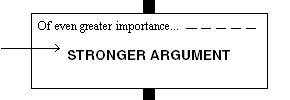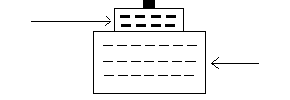









|
 |
Writing
The journalist is now positioned to begin writing.
Here is a diagram of the structure of a traditional editorial. Place your
mouse pointer over the diagram, and then click on each part to go to a
more detailed explanation and/or example:
Editorial Structure
|
| Catch
attention:
Begin with a general statement which does not indicate the writerís
stand on the controversy. Be careful; donít make it too obvious.
It should be creative, thoughtful and specific. |
 
 |
Commit:
The lead should flow naturally into the thesis, or stance, taken
by the editorial. |
| Concede:
After stating thesis, recognize strongest opposing argument. |
 |
Counter:
Switch now into a strong argument in favor of your thesis. |
| Convince:
Build on your last point by making an even stronger point. Be sure
points are backed by facts, examples. |
 |
|
|
 |
Clinch:
Save the strongest argument for last. This discourages rebuttal
and leaves the reader with something convincing to ponder. |
| Commit
again: Using different words, restate
your thesis. |
 |
Cap it off:
Leave the reader with a little something extra: a vision of
the future, a revisit to the lead, a call to action, etc. |
A final note:
While professional editorial writers use many different structures,
this model serves the beginning writer well. Its principles are
solid. After the writer gets more experience, he/she will discover
ways to vary the structure depending on the topic and approach. |
 View and print this diagram in the Adobe Acrobat PDF format.
View and print this diagram in the Adobe Acrobat PDF format.
Get help on viewing
PDF files
|


